This article was medically reviewed by Sarah Gehrke, RN, MS and by wikiHow staff writer, Danielle Blinka, MA, MPA. Sarah Gehrke is a Registered Nurse and Licensed Massage Therapist in Texas. Sarah has over 10 years of experience teaching and practicing phlebotomy and intravenous (IV) therapy using physical, psychological, and emotional support. She received her Massage Therapist License from the Amarillo Massage Therapy Institute in 2008 and a M.S. in Nursing from the University of Phoenix in 2013.
There are 14 references cited in this article, which can be found at the bottom of the page.
This article has been viewed 170,014 times.
Having your neck out of alignment is a common issue, especially if you’re sitting at a computer all day. A neck that is out of alignment can cause pain and discomfort. If you’ve been experiencing neck pain and tension, then you are likely looking for a solution. Fortunately, it’s possible to realign your neck using neck stretches, lifestyle changes, or a chiropractor.
Steps
Using Neck Stretches
-
1Warm up your neck. Warming up your neck muscles before stretching will help prevent muscle tightness and pain. Gently stretch your neck by rolling your head to each side. Start with your head leaning toward the right, then gently lower your head in front of you. Continue around until your head leans to the left.[1]
- Repeat the exercise, gently rolling your head from side to side.
- Anytime you are stretching your neck, be very careful not to go too far. Use slow, gentle movements.
-
2Try a front neck stretch. Called a cervical flexion stretch, moving your head to the front and back can help realign your neck. Sit in a straight chair looking forward. Bend your chin down to your chest and hold for 15 seconds. Lift your head back to the starting position, then repeat ten times. After the tenth repetition, bend your head backwards, then repeat the exercise ten times from the backward position.[2]
- Make sure that your movements are smooth and gentle.
- When moving your head backwards, go very slowly and stop as soon as you feel resistance. Never force your head backwards.
Advertisement -
3Do a side neck stretch. Called a cervical lateral flexion stretch, turning your head side to side can help with alignment. Start with your head straight with your chin parallel to the floor. Turn your head to the right and hold for 15 seconds. Relax and return to your starting position. Repeat for ten repetitions.[3]
- After you finish on the right side, repeat for your left side.
- Stop turning your head as soon as you feel resistance, even if you haven't turned all of the way to the side.
-
4Use your arm to stretch your neck. Stand or sit with your back straight. Turn your head to the right, then turn your face toward the ceiling. Look forward and bend you head to the right. Using your right arm, gently press your head toward your right shoulder. Hold for 30 seconds.
- Repeat the stretch on your left side.[4]
- Don't force your head down. The tilt of your head should be slight.
-
5Squeeze your shoulder blades together. Relax your shoulders and keep your arms at your side. Squeeze your shoulder blades together and hold for five seconds. Release, then repeat the stretch for ten repetitions.
- Do three sets of ten each day.
- Intensify the stretch by holding for ten seconds instead of five.[5]
Changing Your Lifestyle
-
1Adjust your computer monitor. If you spend time on a computer, then the position of your monitor could be causing your neck misalignment. Raise your monitor so that the top third of your screen is directly in your eyeline. Position the monitor 18 inches (46 cm) to 24 inches (61 cm) from your face.[6]
-
2Sit up straight. When you sit in a chair, press the bottom of your butt against the back of your chair. Allow your back to curve slightly, pressing your upper back against the chair. Keep your neck and head straight.[7]
-
3Sleep on a pillow that supports your neck. You spend about a third of your time sleeping, and the wrong pillow can cause your neck to be poorly aligned.[8] Your pillow should support your neck and keep in in line with your upper back and chest. A pillow that is too high or too low will put strain on your muscles, resulting in misalignment and pain.
- Great pillow options for neck alignment include memory foam pillows or neck roll pillows.
- A good pillow will also allow you to stay comfortable in different sleeping positions.[9]
- Replace your pillows annually.
-
4Take posture breaks. Many people spend their day sitting at a desk, which can negatively affect your posture and health. Schedule breaks throughout your day to get up and walk around. While you’re up, focus on walking with good posture.[10]
- Stand up straight, roll your shoulders back, and face forward.
- Do your neck stretches during your breaks.
-
5Eat a healthy, balanced diet. Make sure that your diet is high in nutrients that support healthy bones, such as protein, calcium, iron, magnesium, vitamin K, vitamin C, and vitamin D3. Eating a healthy, balanced diet can also help you maintain a healthy weight, which will help your bones by making their load lighter.[11]
- Eat lean proteins, fruit, and plenty of vegetables.
- Consider taking a multivitamin.
-
6Exercise regularly. Gentle exercise will help prevent injuries and pain in both your neck and back. When you exercise, your vertebrae swell with water, which allows nutrients to flow into your bones. Exercise can also help you control your weight, which will help by reducing the pressure on your bones.[12]
Using a Chiropractor
-
1Research your local providers. Do a little research about your local providers, including looking them up on the web. Check out their reviews, office ratings, and office website. Search for any news items related to the office.
- Call to ask them about their services.
- Ask if they take your health insurance.
- Tell them that you are having neck issues and want to have your neck realigned.
- Some suggest looking into an Egoscue practitioner. These professionals use exercises to let gravity realign your neck and back.[13]
-
2Make an appointment. Once you choose a provider who can offer the service you want, schedule your appointment. You may be able to do this over the phone or online.
- Ask if there is any paperwork you need to complete before your visit, and how early you should arrive.
- Tell the office that you want your neck realigned.
- You may need to go to a consultation first. The doctor will evaluate you and recommend a treatment plan comprised of multiple visits, as well as self-care you can practice at home.
-
3Attend your appointment. On the day of your appointment, wear a loose-fitting, two-piece outfit that you are comfortable in. You will be lying on a table and possibly shifting around, so keep that in mind.
- Bring any questions you have for the doctor.
-
4Schedule your remaining visits at the end of your first appointment. You may need more than one appointment in order for your treatment to be effective. Talk to the office about scheduling your remaining appointments before you leave so that you are following a proper treatment schedule. Starting the process but not finishing it could cause more harm than good.[14]
- Bring your personal calendar or scheduler.
- Ask the doctor when they recommend you come back, and then follow their instructions.
-
5Expect side effects. Mild side effects are normal for a few days after treatment. Call your doctor if they bother you or if they continue more than a few days. Possible side effects include:
- Pain in the treatment area.
- Fatigue.
- Headache.[15]
-
6Follow the doctor’s instructions. Your doctor may recommend additional steps to support your alignment procedure, and it's important that you follow their instructions. These steps could include:
- Exercise.
- Stretching.
- Massage.
- Weight Loss.
- Heat or Ice.
- Foam roller.
- Trigger point therapy.
- Electrical stimulation.[16]
References
- ↑ https://fitday.com/fitness-articles/fitness/exercises/the-best-stretching-exercises-for-your-neck.html
- ↑ https://ehs.ucsc.edu/programs/ergo/stretch.html
- ↑ https://www.hss.edu/article_back-neck-stretches.asp
- ↑ https://p3physio.com/4-best-stretches-to-get-rid-of-neck-tightness-and-get-neck-pain-relief/
- ↑ https://myhealth.alberta.ca/health/AfterCareInformation/pages/conditions.aspx?hwid=abr7628&
- ↑ https://www.spineuniverse.com/wellness/ergonomics/workstation-ergonomic-tips-computer-monitors-posture
- ↑ https://www.nhs.uk/live-well/exercise/common-posture-mistakes-and-fixes/
- ↑ https://www.spine-health.com/wellness/sleep/pillows-neck-pain
- ↑ https://www.urmc.rochester.edu/encyclopedia/content.aspx?ContentTypeID=1&ContentID=4460
- ↑ http://www.chopra.com/articles/6-yoga-poses-to-help-relieve-neck-pain#sm.0000sznj9rg52e7zxv322250h0p25
- ↑ https://www.spine-health.com/wellness/nutrition-diet-weight-loss/food-thought-diet-and-nutrition-a-healthy-back
- ↑ https://www.spine-health.com/wellness/nutrition-diet-weight-loss/lifestyle-and-diet-tips-healthy-bones
- ↑ https://www.palmer.edu/about-us/what-is-chiropractic/
- ↑ http://www.mayoclinic.org/tests-procedures/chiropractic-adjustment/basics/how-you-prepare/prc-20013239
- ↑ http://www.mayoclinic.org/tests-procedures/chiropractic-adjustment/basics/how-you-prepare/prc-20013239
- ↑ http://www.mayoclinic.org/tests-procedures/chiropractic-adjustment/basics/how-you-prepare/prc-20013239
About This Article
If you’re having pain or tension in your neck, try to realign it using stretches and lifestyle changes. When stretching your neck, gently warm up the muscles by rolling your head from side to side. Once your neck feels loose, sit up straight and bend your chin to your chest. Hold this stretch for 15 seconds, then lift your head to its natural position. Repeat this exercise 10 times, then lift your chin up toward the ceiling 10 times. Along with stretching, try raising your computer monitor so that the top third of your screen is directly in your eye line, which will help you avoid neck strain. You can also start sleeping on a memory foam or neck roll pillow to keep your upper body fully supported. For more tips from our Medical co-author, including how to use a chiropractor to relieve neck pain, keep reading!
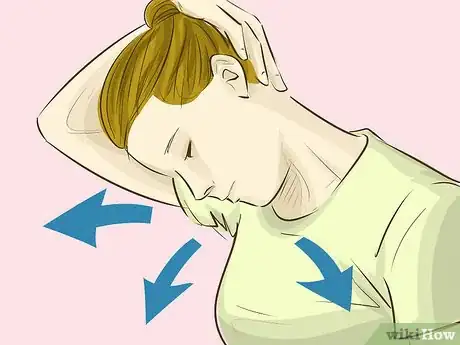
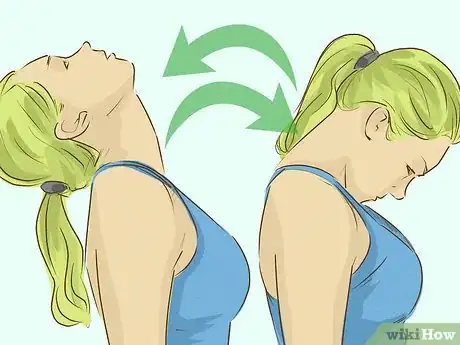


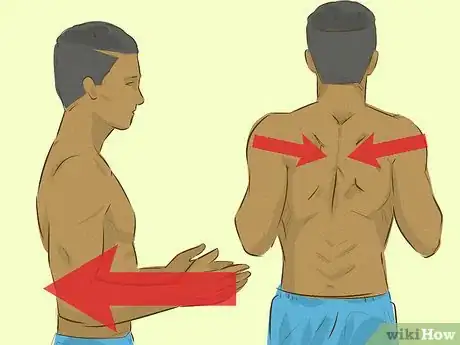
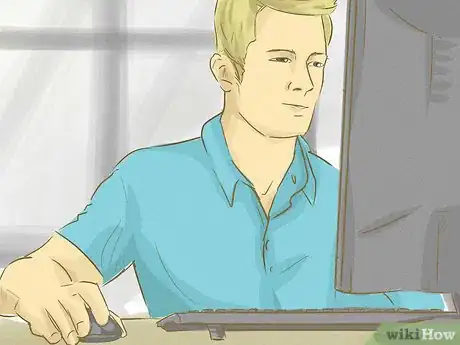
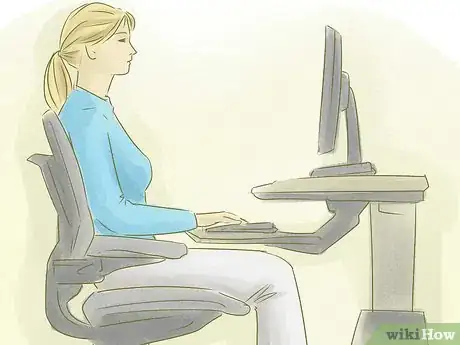
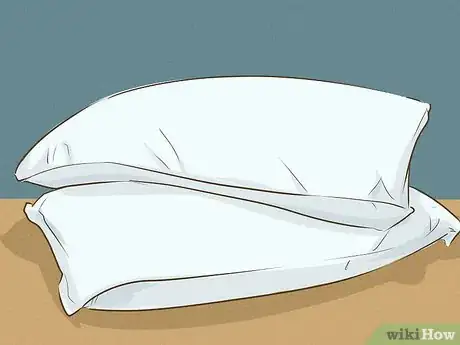







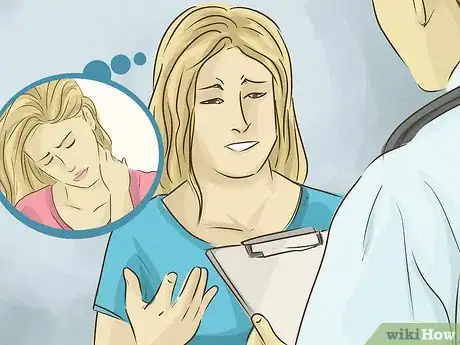
-Step-3-Version-3.webp)


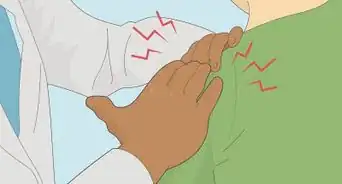



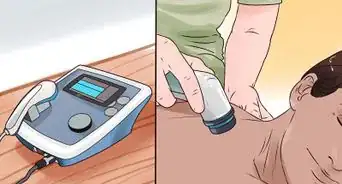
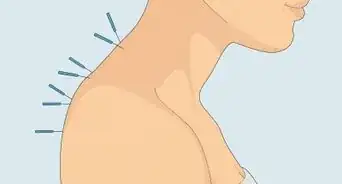













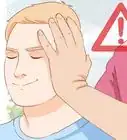

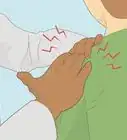




































Medical Disclaimer
The content of this article is not intended to be a substitute for professional medical advice, examination, diagnosis, or treatment. You should always contact your doctor or other qualified healthcare professional before starting, changing, or stopping any kind of health treatment.
Read More...